
Low tide and high tide characterize the oyster – actually
Oysters are originally at home on shallow rocky coasts, where they feed on plankton from the seawater during high tide. At low tide, when they are in the air, they fold their thick and sharp-edged shell watertight. This strengthens the muscle and makes it so enduring that an oyster can even survive for two weeks in dry conditions. But how do oysters thrive in the Mediterranean, which has no tides like an ocean?
A hundred years ago, people in Japan began using a diving technique to simulate high and low tides. In the meantime, the technique of longline cultivation has opened up many waters worldwide for oyster farming. This is also the case in southern France at the Étang de Thau, an 18-kilometer-long lagoon. The lake is largely separated from seawater by a sandbank.

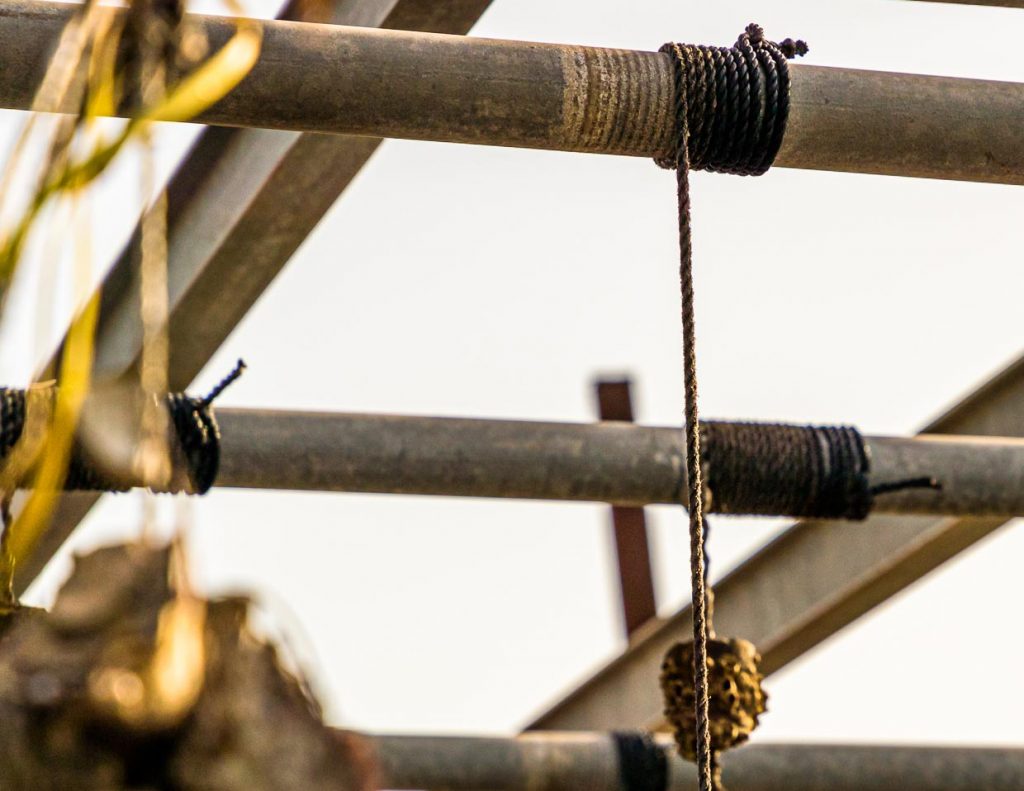
Tinkerers of longline farming
At the Bassin de Thau, we have an appointment for dinner with Florent Tarbouriech. He is the best known of 600 oyster farmers on this lagoon off the Mediterranean. The climate and the mixture of salt and fresh water make the oysters grow especially fast here.
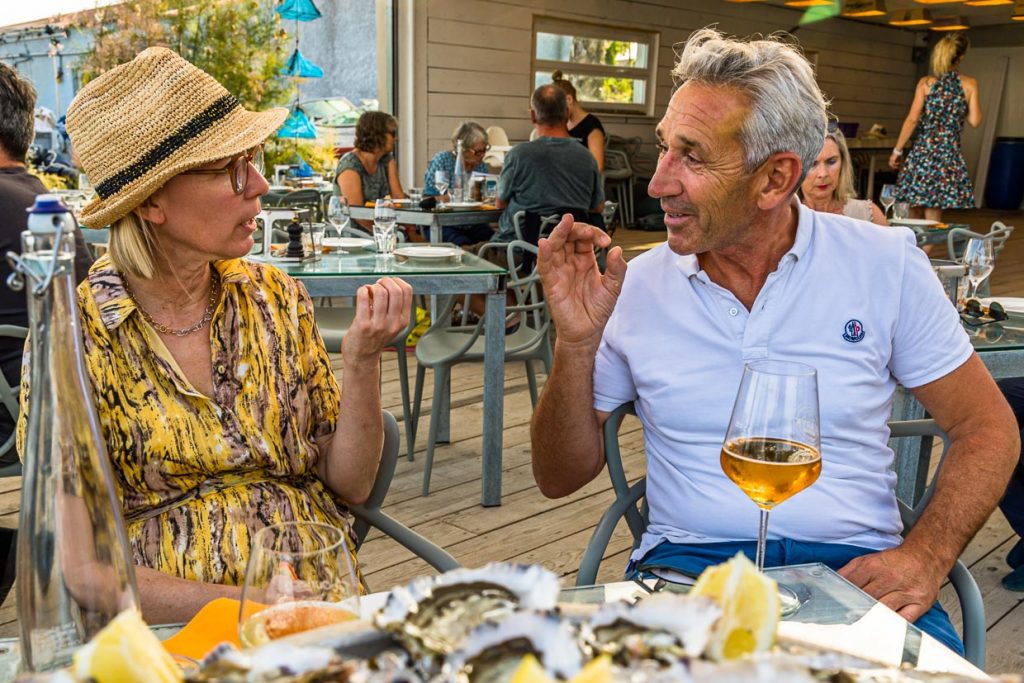
Oyster farming on a long leash
In the warm Mediterranean climate and nutrient-rich waters of Étang de Thau, oysters grow quickly. The lagoon has numerous freshwater tributaries as well as a freshwater spring located deep in the lake. Therefore, the water and also the oysters here are not as salty as directly in the Mediterranean Sea. The lake is largely separated from the seawater by a sandbar. The Canal du Midi, with its lime-rich water from the Pyrenees, helps provide the right material for the oysters to grow their thick shells.
For 20 years, Florent Tarbouriech has adapted the method of longline farming, originally from Japan, to local conditions. The perfect oyster, he reveals, achieves its targeted sweetness through a now-patented training program.
The length of time the oysters are in the air should increase with their age. This endurance training stimulates the oyster’s metabolic system, giving the flavor a sweet almond note.
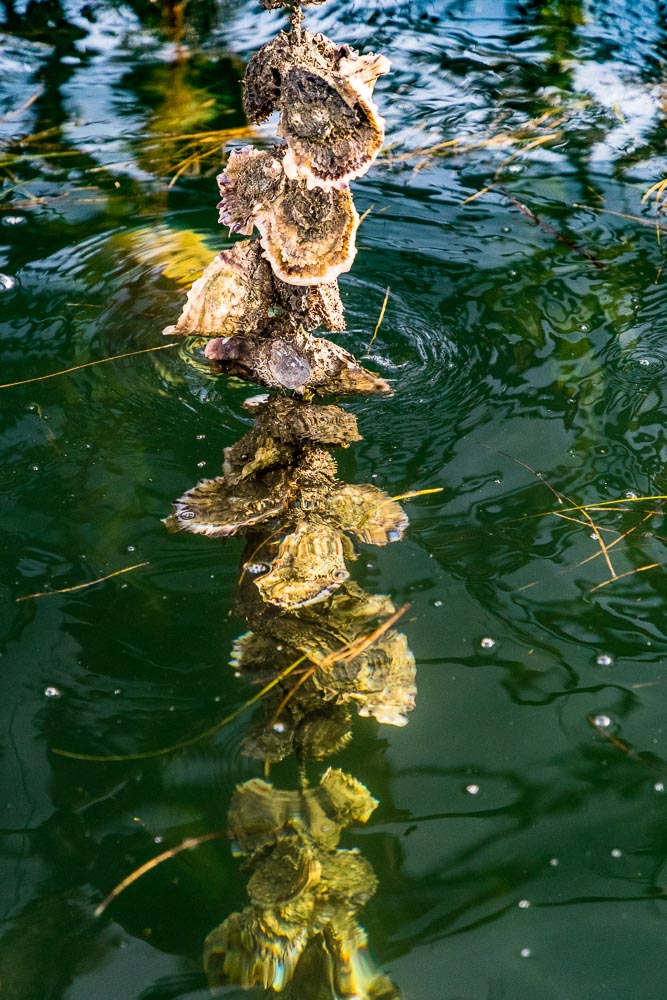
The triploid oyster
In the months of February and August, the expert reveals, the oysters taste best to him. This is surprising, because the summer months (which do not have an R in their name) are not originally part of the best oyster season. Summer is the reproductive season for all types of oysters, when they change their typical taste. However, because demand is high in the summer, many oyster farmers have switched their operations to sterile oysters. Florent Tarbouriech sources his oyster larvae from Brittany. In hatcheries there, the triploid oysters, which have no reproductive phase with their triple set of chromosomes, are bred by crossing wild diploid eggs with tetraploid seeds.
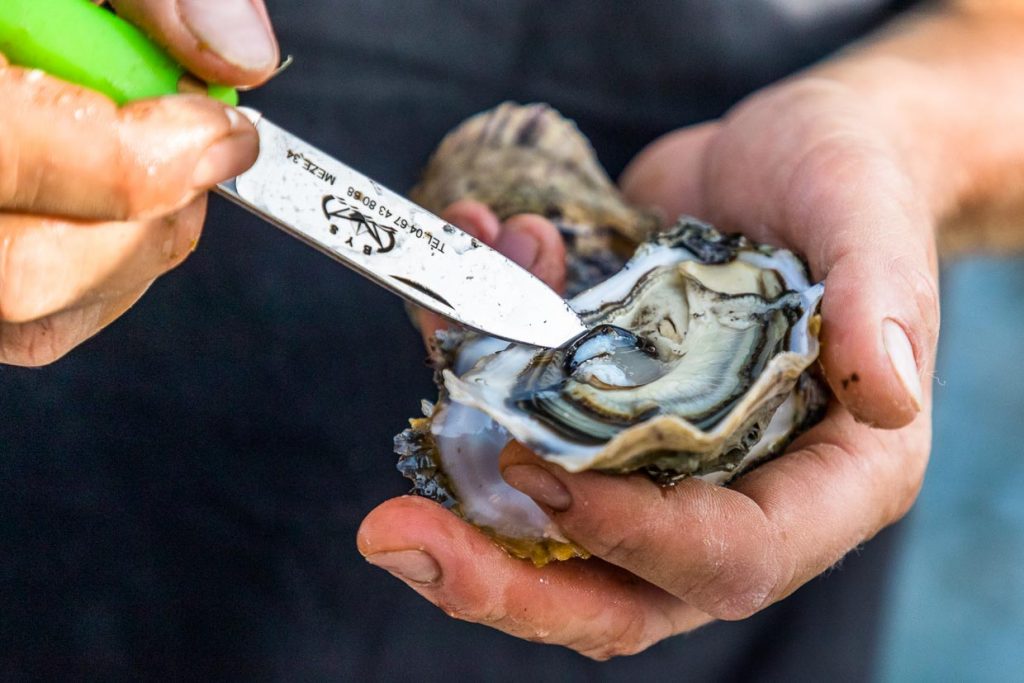
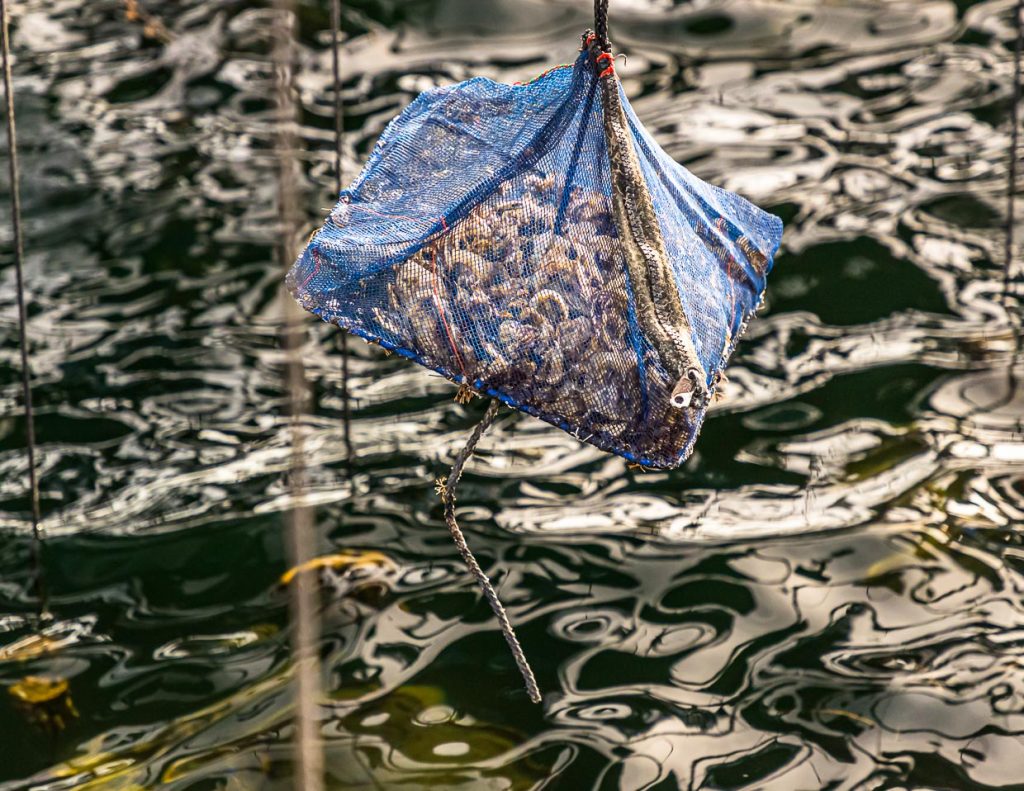
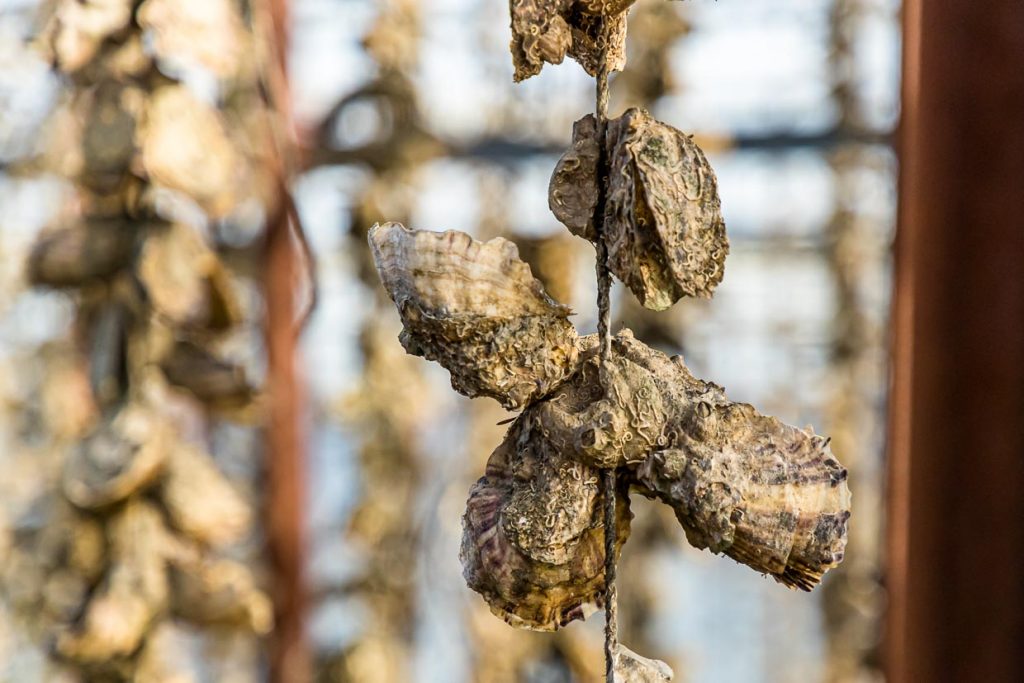
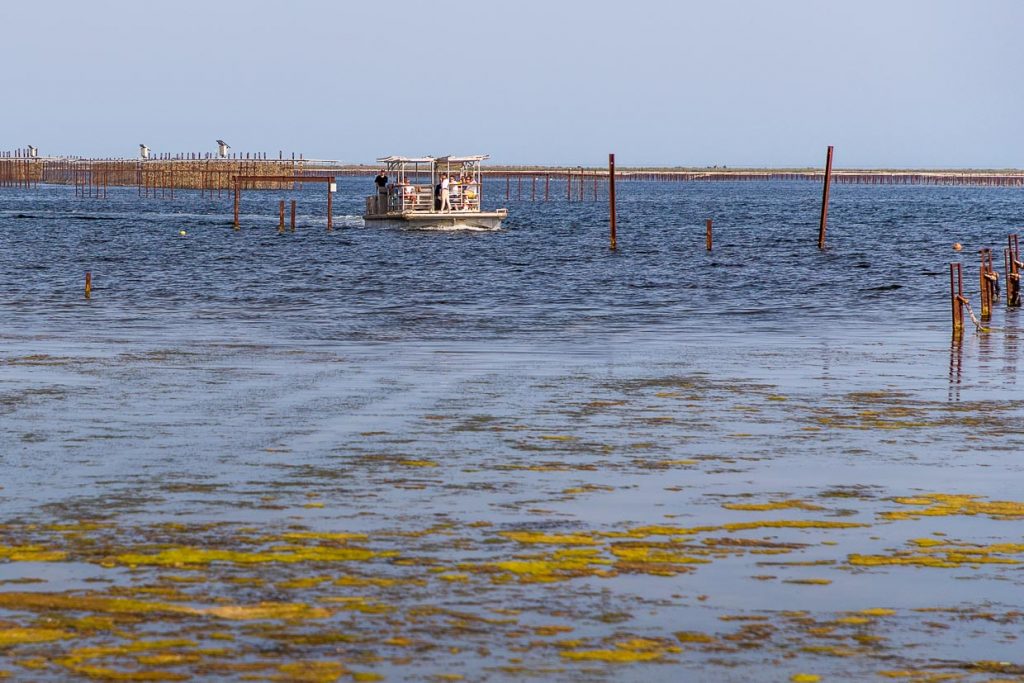
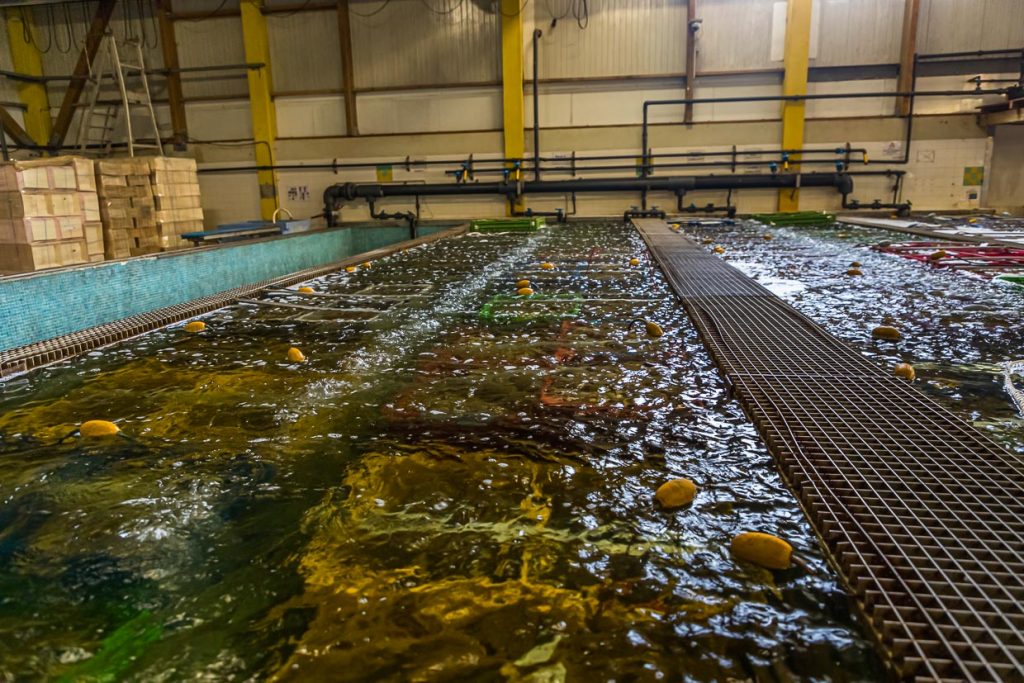
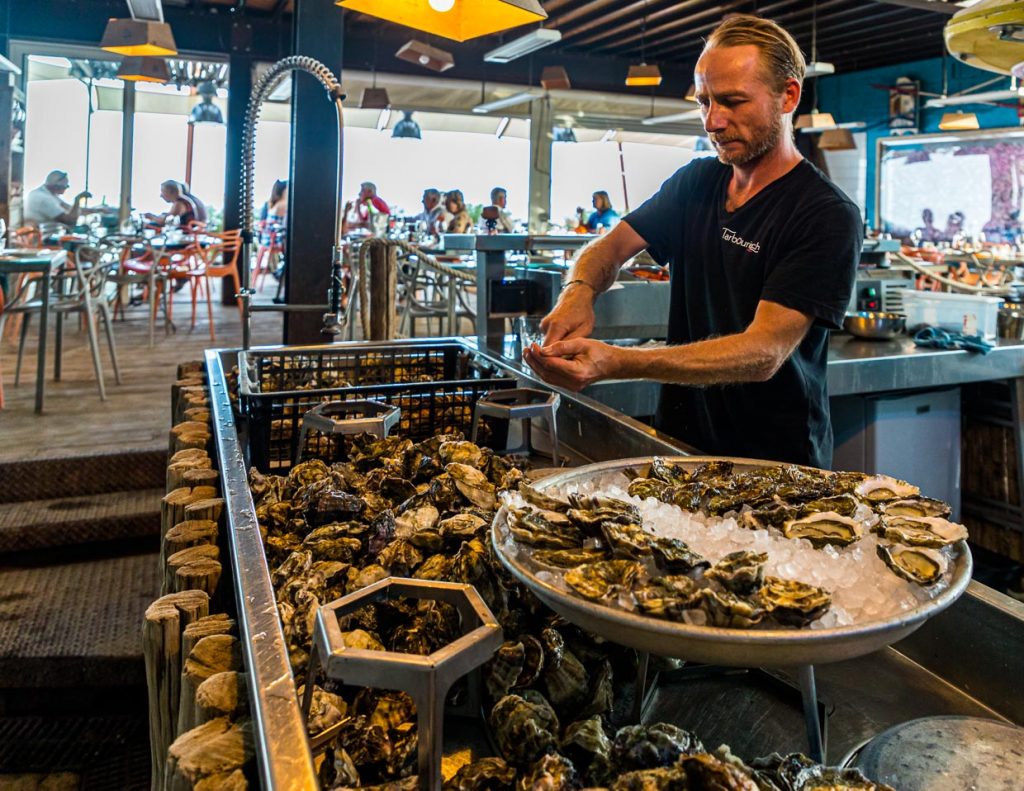
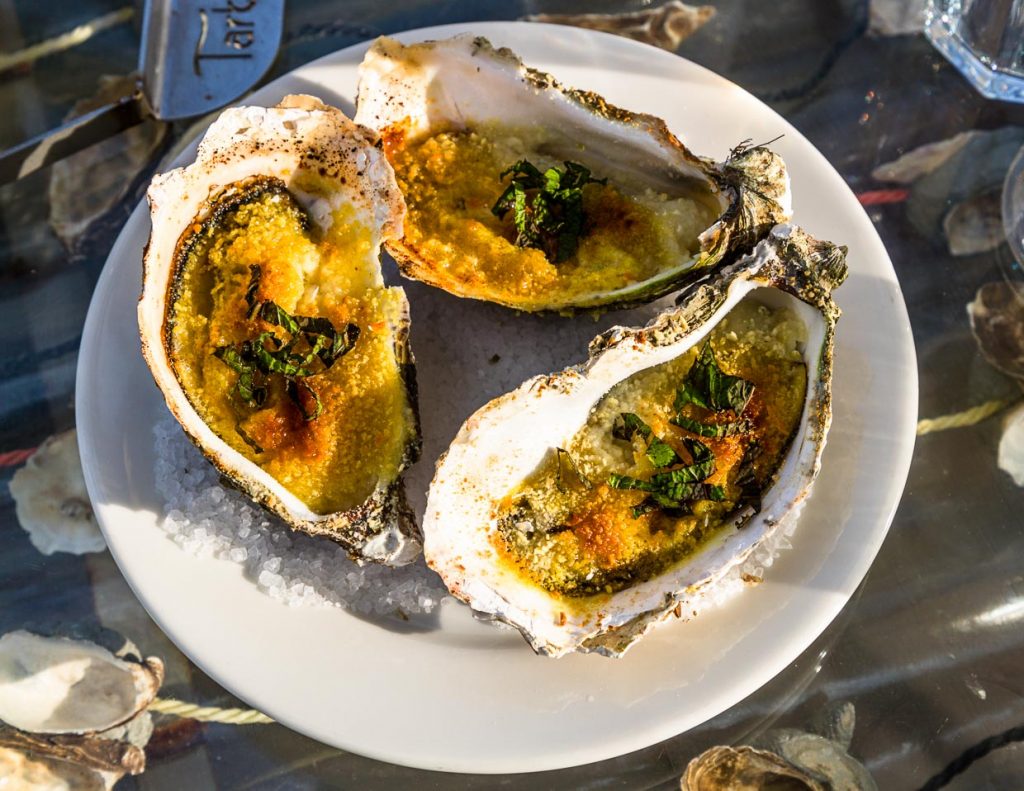
The taste of the oyster
The oysters from the Mediterranean Sea are considered saltier compared to the Atlantic oysters of the Betragne or Normandy. However, the oyster farmers at Étang de Thau benefit from the inflow of established freshwater rivers into the lagoon. This location and the muscle training on the longlines influence the taste. The oysters from the nutrient-rich waters of the Étang de Thau are not very salty, and from a medium size, the muscle meat of the oysters develops a slight sweetness reminiscent of the taste of almonds. Florent Tabouriech’s oysters can be sampled during the summer months at the idyllically located beach restaurants Maison Tarbouriech Le St Barth’ in Marseillan and Le St Pierre near Loupian.
For those who prefer to approach the oyster theoretically, I recommend MFK Fisher’s little book from 1941 Consider the Oyster. The American author describes in an episode of her book that eating the first oyster has always cost overcoming. More on the subject of oysters in the article Oysters Always Go

